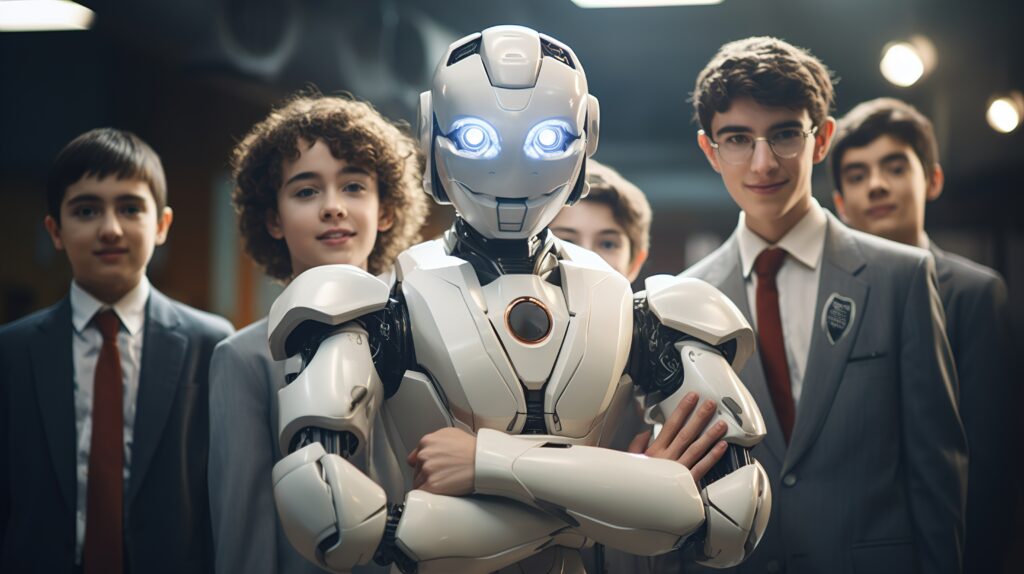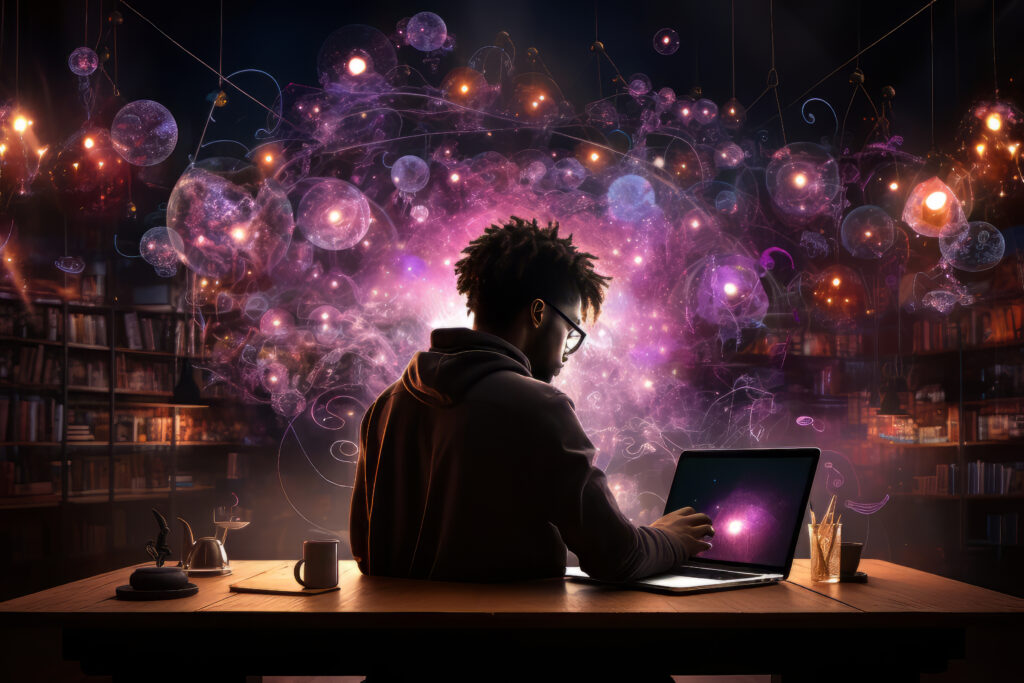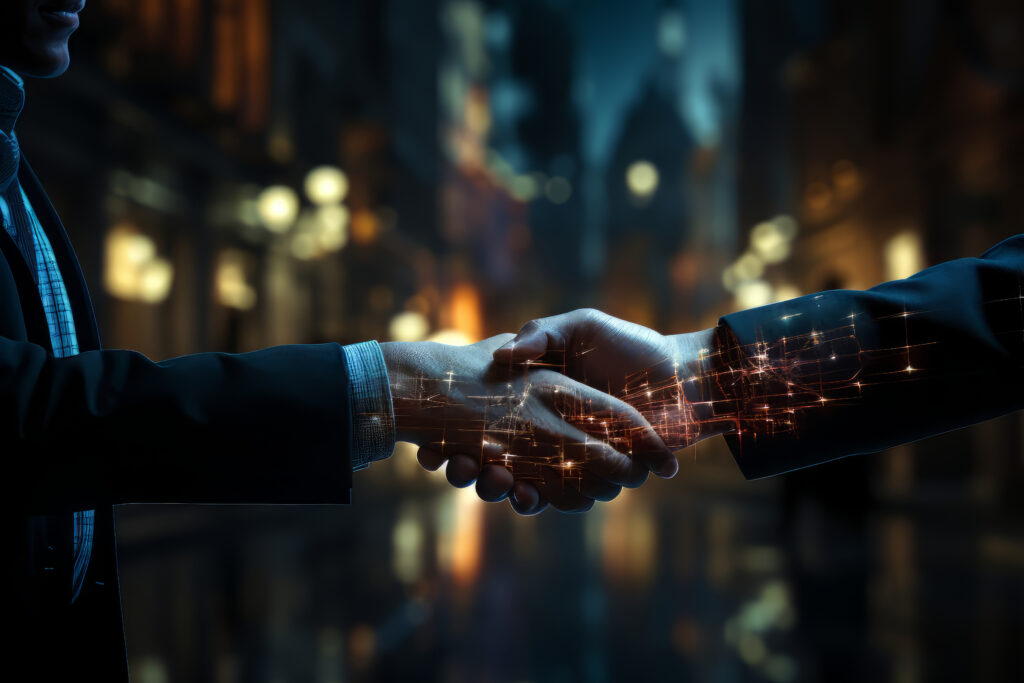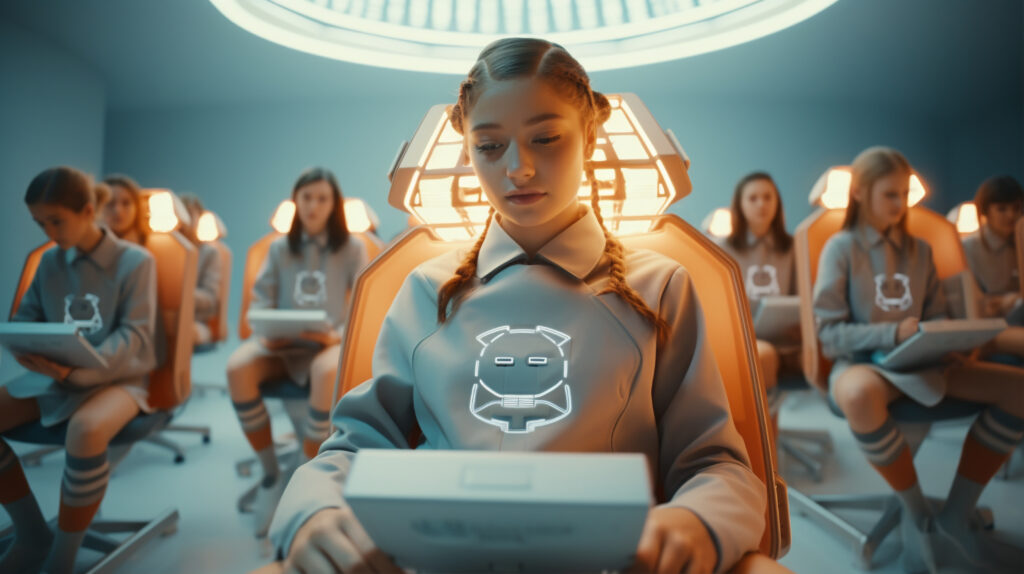AI Creators: Protecting Intellectual Property
In the burgeoning field of artificial intelligence, the question of how to protect the intellectual property rights of AI creators presents a labyrinth of legal, ethical, and practical challenges.
As autonomous systems increasingly perform tasks traditionally associated with human creativity, the lines demarcating original authorship and ownership of content are becoming obscured, prompting a reexamination of intellectual property law as it applies to AI-generated works.
While some argue for extending existing protections to cover the fruits of AI’s ‘labor,’ others contend that doing so could stifle innovation and limit knowledge sharing essential for advancing AI technology.
This evolving landscape necessitates a nuanced discussion about how to effectively safeguard the interests of human creators in the age of machine learning without impeding the progress that could redefine artistic and intellectual creation.
As we further probe this topic, one must consider the intricate balance between fostering innovation and acknowledging the human ingenuity behind AI development. This equilibrium may shape the future trajectory of technology and creativity.
Key Takeaways
- AI-generated works do not meet the threshold of original work that reflects human authorship, leading to challenges in recognizing AI as inventors or authors.
- Patent offices consistently rule that AI cannot be listed as inventors, emphasizing the necessity of human intellectual contribution.
- Copyright protection for AI-generated works is uncertain, and straightforward legal guidelines are needed to address ownership and authorship in the age of AI-driven innovation.
- Confidentiality and protection of algorithmic trade secrets are crucial in AI development, requiring rigorous security protocols, legal measures, and clear contractual agreements.
Defining AI Intellectual Property

In intellectual property law, classifying creations derived from artificial intelligence systems necessitates a precise understanding of AI’s role in the inventive process and the subsequent legal attribution of ownership and rights.
The refusal of patent offices like the USPTO, EPO, and UKIPO to grant inventorship to an AI system known as DABUS underscores a foundational principle: intellectual property rights (IPR) are intrinsically linked to human creativity.
As AI becomes more ingrained in daily life, powering everything from search algorithms to social media algorithms, the line between human and computer-generated works blurs, presenting complex challenges for copyright laws.
Conception, the cornerstone of inventorship, demands a human element—a mental act that AI, by current legal standards, cannot fulfill. This is exemplified by the United States Federal Circuit and UKIPO’s stance in the DABUS case.
As such, while innovative, AI-generated content does not meet the threshold of original work that must reflect human authorship. Generative AI, therefore, operates within a legal framework that prioritizes natural persons as inventors, which is pivotal for the integrity and enforceability of patents.
Addressing the legal nuances surrounding AI contributions to intellectual property is paramount in an era where AI’s capabilities continue to evolve.
Copyright Laws and AI

As technological advancements propel the proliferation of artificial intelligence in creative domains, copyright laws are increasingly tested by the rise of AI-generated content. The legal landscape is adapting to the challenges posed by AI’s role in creation, with implications for copyright and intellectual property law.
Consider the following key points:
- AI as a Non-Inventor: USPTO and UKIPO have determined that AI systems, such as DABUS, cannot be recognized as inventors under current intellectual property frameworks, emphasizing the necessity of human conception.
- Conception in Inventorship: The US Federal Circuit and the UK’s Designs and Patents Act underscore that inventorship requires a mental act of conception, a criterion beyond the capabilities of AI, thereby excluding AI-generated works from certain protections.
- Copyright Office Stance: In the United States, the Copyright Office maintains that only a natural person can legally conceive an invention, a prerequisite for copyright protection, reaffirming the human-centric nature of current copyright laws and AI.
- Legal Risks with Generative AI: The use of AI in content generation carries legal risks, including potential copyright infringement, ownership disputes over AI-generated works, and issues with unlicensed content in training datasets, necessitating careful compliance with intellectual property law.
Navigating this evolving legal terrain requires a nuanced understanding of both technology and law to protect rights in the age of AI creativity.
AI Authorship Controversies

The delineation of intellectual property rights becomes increasingly complex as artificial intelligence systems play a more significant role in creative and inventive processes. Recent decisions by patent offices underscore the prevailing legal stance that AI entities cannot be recognized as inventors, sparking debate over conception criteria and whether AI can meet such thresholds.
The distinction between human and machine-generated creativity necessitates precise legal frameworks to address ownership and authorship in the age of AI-driven innovation.
Defining AI Ownership
While artificial intelligence has become increasingly embedded in various aspects of modern life, the controversies surrounding AI authorship and ownership rights are pushing the boundaries of traditional intellectual property law. The following key points underscore the complexities of defining ownership in the context of AI-generated creative works:
- Legal Precedents: Patent offices have set a precedent by denying AI systems like DABUS inventor status, reinforcing that intellectual property rights are reserved for human authors.
- Conception Criterion: Inventorship hinges on the capacity for mental conception, a criterion AI systems, lacking consciousness, cannot fulfill.
- Regulatory Definitions: Current definitions by bodies such as the USPTO mandate that a natural person must conceive an invention, excluding AI from the authorship paradigm.
- Compliance Imperative: The increasing use of AI for autonomous bootstrapping and processing of training data necessitates stringent adherence to intellectual property laws to mitigate legal risks.
Human Vs. Machine Creativity
Navigating from the issue of AI ownership, a parallel debate emerges when comparing human and machine creativity, particularly concerning the controversies of AI authorship under current intellectual property frameworks. The rejection of AI as an inventor by entities such as the USPTO underscores a prevailing legal principle: patent inventorship necessitates human authorship. Blurring the distinction between works ‘created by a human’ and AI-generated content raises questions about the allocation of copyright protection for AI-generated works.
| Factor | Human vs. AI Creativity |
|---|---|
| Authorship | Human required for patents |
| Legal Recognition | AI’s role in creation is debated |
| Creative Input | Uncertain about AI-generated works |
| Copyright Protection | Uncertain for AI-generated works |
| Inventor Declarations | Challenging for AI contributions |
This table encapsulates the complexities of intellectual property rights as they grapple with the evolving landscape where human creativity intersects with AI’s capabilities, all of which must be navigated within the bounds of existing legal frameworks and potential reforms to accommodate new technological advancements.
Patents in the AI Arena

In intellectual property law, patents are a contentious issue when attributing inventorship to artificial intelligence systems, as current legal frameworks mandate the necessity of human ingenuity. The confluence of technology and law has sparked debate over how to adapt the patent system to recognize contributions made by AI, particularly when the AI is engaged in autonomous bootstrapping of unified solutions.
Consider these critical points in the AI patents dialogue:
- Inventorship Recognition: Patent offices globally, including the USPTO, EPO, and UKIPO, have consistently ruled that AI cannot be listed as an inventor on patent applications.
- Legal Definitions: The term ‘inventor’ legally implies a natural person, as interpreted by the USPTO under Title 35 of the US Code, underscoring the importance of the human mental act of conception.
- Oath and Declaration: A patent application necessitates an oath or declaration by the inventor, which is problematic for AI entities like DABUS that cannot engage in such legal affirmations.
- Legal and Ethical Considerations: The use of AI in generating inventions raises complex legal and ethical questions, including compliance with current laws, and highlights the arrangements necessary for extending legal protection to AI-assisted creations.
The discourse on AI and patents necessitates a technologically informed, legally astute approach to balance innovation with robust legal protection.
Trade Secrets and AI

As the competitive landscape for artificial intelligence evolves, protecting algorithmic trade secrets becomes paramount for maintaining a strategic advantage.
The confidentiality surrounding AI development is critical for preserving the integrity and value of proprietary systems and ensuring compliance with intellectual property laws.
Companies must employ rigorous security protocols and legal measures to safeguard their innovative AI technologies from misappropriation and unauthorized disclosure.
Safeguarding Algorithmic Trade Secrets
To ensure the protection of trade secrets in the evolving landscape of artificial intelligence, it is crucial for entities to implement robust security measures and legal strategies that address the unique challenges posed by the use of AI in the creation and handling of proprietary information.
Here are key considerations:
- Employ encryption and access controls to safeguard machine learning algorithms and data sets.
- Draft clear contractual agreements defining algorithmic trade secrets’ ownership and confidentiality.
- Conduct regular audits to monitor and protect intellectual property assets.
- Develop policies for companies selling AI products to prevent unintended disclosure or misuse of trade secrets.
These steps are vital for maintaining businesses’ competitive edge and legal rights in the rapidly advancing field of AI.
Confidentiality in AI Development
How do companies navigate the intricate balance between collaboration and confidentiality when AI development hinges on trade secrets?
As AI becomes increasingly integral to modern applications, the legal and technological communities grapple with protecting intellectual property rights. The USPTO and the Copyright Office enforce that an inventor must be a natural person, thus excluding AI from holding patents. This position impacts the confidentiality in AI development, as AI-generated works could raise copyright infringement issues if not meticulously managed.
Firms must devise robust strategies to safeguard AI innovations while respecting the collaborative ethos crucial for technological advancement. Detail-oriented policies and scrupulous compliance practices are pivotal to maintaining the sanctity of trade secrets amidst the burgeoning realm of AI.
Licensing AI-Created Works
While navigating the complex terrAIn of intellectual property law, entities seeking to license AI-created works must diligently secure permissions that respect the AI technology’s ownership rights and the evolving legal standards governing such content. Licensing AI-created works poses unique challenges as these works, created by a computer, blur the lines of traditional authorship. Entities must recognize that the legal landscape is adaptive and approach licensing with a strategy emphasizing legal compliance and foresight.
Here are vital considerations in licensing AI-created works:
- Secure Permissions: Obtain explicit consent from the AI’s owner for using, distributing, or modifying AI-generated content.
- Tailored Licensing Agreements: Develop licensing frameworks that account for the peculiarities of AI and copyright protection uncertainties.
- Compliance and Provenance: Ensure adherence to copyright law and establish a clear lineage for AI-created works to mitigate infringement risks.
- Stay Informed: Keep abreast of technological advancements and judicial decisions that impact intellectual property law related to works created by AI.
International IP Regulations
Navigating the nuances of licensing AI-created works necessitates understanding International IP Regulations, which currently present a varied landscape regarding recognizing AI as a potential source of intellectual property. The USPTO, EPO, and UKIPO have notably rejected the notion of AI as inventors, as evidenced by their unanimous stance against the AI named DABUS. This reflects a broader hesitation to ascribe inventorship to non-human entities.
The omnipresence of AI in daily life, from rudimentary spell checkers to complex social media algorithms, has spotlighted the need for clear legal guidelines concerning intellectual property rights and AI. However, entities like the USPTO and the US Copyright Office maintain a strict definition of inventorship and authorship that excludes AI, underscoring the indispensability of human creativity.
Here is a table illustrating the positions of various intellectual property offices on AI inventorship:
| Authority | Stance on AI as Inventor | Impact on Rights |
|---|---|---|
| USPTO | Does not recognize | Limits AI patentability |
| EPO | Denies inventorship | Upholds human-centric IP law |
| UKIPO | Rejects AI claims | Ensures human ownership |
| CJEU | Not yet fully addressed | Potential for legal evolution |
| Copyright | Excludes AI | Protects human authorship |
To mitigate legal risks, stakeholders must ensure law compliance, safeguard against copyright infringement, and stay attuned to evolving court rulings, particularly any future judgments by the European Union’s Court of Justice (CJEU) that could disrupt the current norms.
Ethical Considerations
As we grapple with the ethical dimensions of AI in intellectual property, the challenges of AI ownership and the enforcement of creative rights demand rigorous scrutiny.
The imperative to align AI’s autonomy with existing legal frameworks raises questions about how AI-generated works can be protected and attributed to human creators or AI entities.
These considerations necessitate carefully evaluating ethical principles in advancing technology, ensuring that intellectual property rights evolve to address the nuanced role of AI as both a tool and potential ‘creator.’
AI Ownership Challenges
The ethical complexities surrounding AI ownership intensify as legal systems grapple with the novel challenge of attributing inventorship and authorship to non-human entities.
- Legal Definitions: Both the USPTO and the US Copyright Office maintain that the term ‘inventor’ or ‘author’ shall be taken to mean a natural person.
- Inventorship Requisites: Conception is deemed a human mental act, a standard AI cannot fulfill, impacting claims of AI inventorship.
- Copyright Concerns: AI-generated works stir debates over copyright protection, particularly when such works lack the hallmark of an ‘author’s intellectual creation.
- Risk Mitigation: Legal strategies for AI ownership challenges include ensuring that computer-generated work complies with current laws and is free from unlicensed content.
Creative Rights Enforcement
Building upon the complexities of AI inventorship, enforcing creative rights poses an intricate web of ethical considerations where the legal system must confront the problem of applying traditional doctrines to the unprecedented capabilities of artificial intelligence.
Notably, the copyright protection framework hinges on the originality and the human element of creating the work. With AI’s emergence, delineating the boundaries for works generated by such entities becomes pivotal.
The enforcement of copyright laws must adapt—identifying the creator remains paramount, as AI alone cannot qualify for copyright. This raises pivotal questions regarding the ownership of copyrighted material produced with AI assistance.
Creative rights enforcement, therefore, demands a nuanced approach, balancing innovation facilitation against safeguarding intellectual property and ensuring that ethical and legal risks are meticulously navigated.
Enforcement Challenges
Enforcing intellectual property rights in AI-generated content presents a complex legal landscape, compounded by the current requirement for a human inventor in patent law and the ambiguity surrounding the ownership of AI-created works.
The following numeric list outlines key enforcement challenges:
- Recognition of AI as Inventor: Patent offices, including the USPTO, adhere to the Patents Act (CDPA), which traditionally recognizes only natural persons, thus rejecting AI as inventors. This creates barriers to securing patents for AI-generated inventions.
- Conception and Declaration: The conception of an invention, a cornerstone of patent law, must be attributed to a human under current statutes. AI’s inability to sign an inventor’s oath complicates the legal process for patent grants.
- Copyright Ownership: The US Copyright Office requires works to be created by a human for copyright protection, which leaves computer-generated works in a precarious position regarding ownership and infringement claims.
- Legal Risks and Implications: Justice of the European courts and others face dilemmas in addressing unlicensed content used in AI’s training data and the broader implications this has on the use and commercialization of AI-generated content, heightening enforcement challenges.
Future of AI IP Rights
Given the myriad enforcement challenges inherent in the current intellectual property framework, it is imperative to consider the evolving landscape of AI IP rights and their implications for future legislation and creative attribution.
As AI continues to permeate various domains, including the creation of musical or artistic works, it raises complex questions regarding the originality and authorship of work that is computer-generated. For instance, projects like the Next Rembrandt, which synthesized the style of Rembrandt Harmenszoon van Rijn, blur the lines between AI as a tool and AI as a creator.
The legal recognition of AI as an inventor or author remains a contentious issue. Patent offices, such as the USPTO, EPO, and UKIPO, have set precedents by denying AI systems like DABUS the inventor status, reinforcing the notion of a ‘natural person’ as the wellspring of inventive activity. This position underscores the legal system’s emphasis on human intellectual contribution while acknowledging AI’s role in conception.
As the use of generative AI escalates, the need for clear, adaptable IP rights frameworks becomes crucial to support innovation while ensuring that creators — human or otherwise — are afforded the appropriate recognition and protection under the law.
FAQs
Are there international standards for the intellectual property rights of AI creators?
As of my last knowledge update in January 2022, no specific international standards exclusively address the intellectual property rights of AI creators. The legal landscape is evolving, and discussions on establishing guidelines for AI-generated content may continue.
Can AI creators use licensing agreements to protect their rights?
AI creators can use licensing agreements to protect their rights by clearly specifying the terms of use, restrictions, and ownership details. Licensing agreements provide a legal framework for regulating AI-generated content and can help address potential disputes.
How can AI creators navigate issues of ownership when collaborating with AI models?
Navigating ownership issues involves establishing clear agreements at the outset of collaborations. Defining the contributions of human creators and AI models, as well as determining ownership percentages, can help mitigate conflicts related to ownership.
What role does transparency play in protecting AI creators’ rights?
Transparency is crucial in protecting AI creators’ rights as it fosters clarity in agreements, acknowledges the role of AI in the creative process, and helps build trust among collaborators. Communicating the contributions of both humans and AI models promotes ethical and legal considerations.
Are there best practices for AI creators to safeguard their intellectual property rights?
Best practices include seeking legal advice, documenting collaborations thoroughly, using clear licensing agreements, and staying informed about legal developments. Engaging in open communication and addressing ownership and usage terms proactively contribute to safeguarding intellectual property rights.